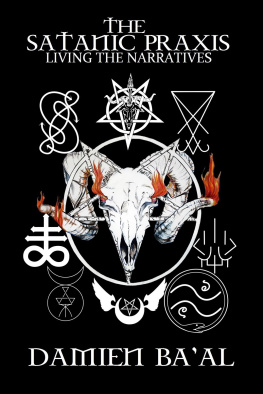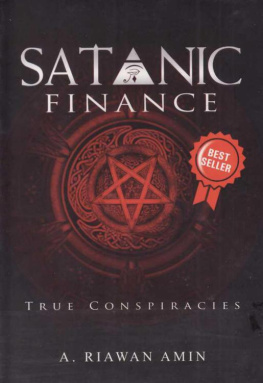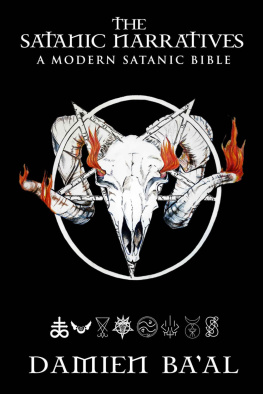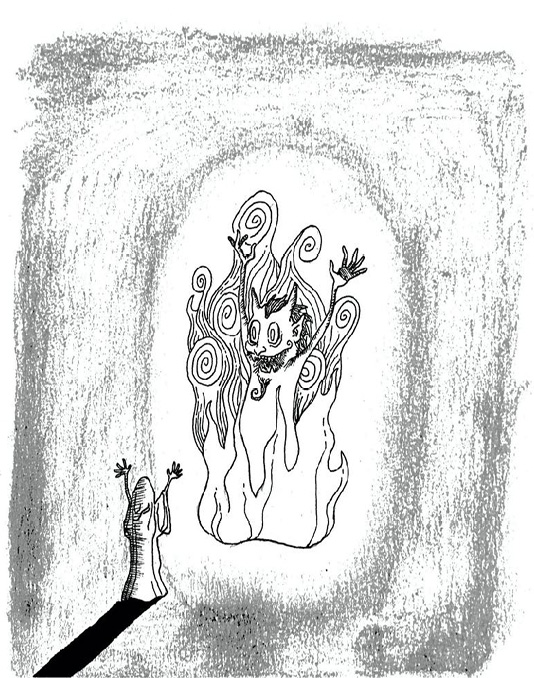WARNING
Do not read further if you are not prepared to transform
Do not embark on this journey if you are not committed t o yourself
The rituals contained in this book have the potential to alter your life
Proceed with confidenc e and care
The Devils Tome:
A Book of Modern Satanic Ritual
Shiva Honey
Foreword by Lucien Greaves
Illustrations by Alexander Corey and Lucien Greaves
The Devils Tome: A Book of Modern Sata nic Ritual
Published by Serpent nae, 2020
Copyright 2020 S hiva Honey
All Rights Reserved.
Illustrations: Lex Corey - pp. 10, 28, 31, 35, 40, 44, 47, 50, 53, 57, 60, 63, 67, 71, 74, 79; Lucien Greaves - pp. 1, 7, 16, 22
This book is the creative product of its artists, contributors, and author. All photos, events, and experiences detailed in this book recount the individual experiences of the author, Shiva Honey, and contributors. This book is not a product of, or endorsed by, The Satan ic Temple.
Any use of information in this book is at the readers discretion and risk.
Contents
I n 2014, The Satanic Temple (TST) made international headlines - and provoked outraged controversy - for plans to re-enact a Black Mass before a student group at Harvard University. The choice to frame the event as a re-enactment, rather than as a real ritual performance was mine, though the distinction struck me as humorously meaningless. Nonetheless, I had hoped that the wording might help superstitious Christians to dismiss the occasion as a powerless bit of theater, not an existential threat to their imaginary spiritual universe where such blasphemous expressions risk imbalancing the heavenly humors and threatening humanitys ever-precarious Eternity.
It did not work.
As the event drew near, hundreds of Catholics took to the streets of Cambridge, marching in a procession, some of them weeping, others casting spells of protection and reparation against the evil soon-to-be-wrought. Desperately, I attempted to convey the non-supernatural reasoning driving Satanic rituals in hopes of allaying bizarre and delusional fears that our activities might summon otherworldly sadistic force. In a statement, I clarified:
The Black Mass, as it is enacted today has no need for supernaturalism, and it is not performed with the infantile expectation that it should conjure Satan or demonic spirits. In fact, it is our assertion that the Black Mass can be enacted with no ill-will toward the world at large, but as an expression of personal independence against the stifling strictures of supernatural religion that were instilled in some of us as frightened and unwitting children. The Black Mass, at its best, should have a cathartic and liberating effect for its participants and observers. In this spirit, Satanism in general embraces the blasphemous, as we reject divine fiats and the notion of symbolic crimes. The Black Mass has been described as elementary level Satanism, as its appeal is strongest for those just finding the light of reason and turning away from their timid superstitions, realizing that they can speak names in vain, eat the wrong kinds of meat on forbidden days, or throw a blessed cracker away with the trash without so much as a bolt of lightning to answer in wrath.
In retrospect, it is not at all surprising that this explanation failed to subdue the outrage of the Boston Archdiocese which seemed to take the position that the rituals intention was irrelevant to its outcome. Powers presumed outside of our understanding were also assumed to be at our command, and regardless of our intentions or beliefs, the re-enactment of this profane ritual would inevitably greatly upset their god. And why not? Sundays find the pews populated with pious defenders of the faith who chant empty phrases in languages they do not speak, participating in symbolic activities they do not understand, all to appease a divine tyrant they can not see. Having ennobled subservience, they see obedience to process as essential to a ritua ls power.
Satanic rituals, on the other hand, are acts of creative expression. Consistent with the philosophical principles of self-determination and anti-authoritarianism espoused by TST, our rituals are not dependent upon prescriptive dogmatic fidelity to rote ceremonies. Rather our rituals are often constructed for a particular moment in time, for enactment at particular events, and subject to the artistic preferences, additions, and revisions, of those who will participate in them, within the limits of their collective consent. Traditional sacred rituals, muttered verbatim, not understood by their executors or observers, and intolerant of modification, are forms of authoritarian conditioning. Satanic rituals, like Satanism itself, are meant to be liberating and enriching.
The fact that we describe TST as non-theistic, and take care to make clear that we do not advocate a belief in the supernatural, leaves a significant number of people perplexed as to why we engage in ritual at all. We ask them to merely consider weddings and funerals as examples of rituals that are commonly understood to hold equal value for believers and nonbelievers alike. Ritual can be an affirmation, a celebration, a catharsis, an expression of camaraderie, a recognition of a significant moment-in-time. And, as in the case of the Satanic Black Mass, a ritual can be a deeply personally significant declaration of independence from oppressive sup erstition.
While TSTs rituals are malleable to creative input and revision, for certain rituals to hold certain names, they must respect certain themes - rituals of the same name converge upon a common purpose, not a shared script. In the case of the Black Mass, the primary requirement is that the ritual be blasphemous, potentially jarring, and irreverent toward symbols of superstition and arbitrary authority.
Of course, the Black Mass is not the only type of ritual that Satanists sometimes feel compelled to perform, and I have witnessed ritual participants enjoying very profound religious experiences of ritual catharsis without any deference to, or need for, beliefs in supernatural powers. Some weep during destruction rituals in which they symbolically purge themselves of unwanted habits, oppressive memories, self-imposed restrictions, or any counter-productive elements of their lives. Chapters that employ rituals of unbaptism, compassion, and other symbolic assertions of individual will and shared purpose, develop a strong bond born of common e xperience.
Grateful participants often offer their post-ritual testimonies to both Shiva and I telling of how life-changing and validating their experience with Satanism within The Satanic Temple has been. Some of them, unable to believe in the intellectually insulting claims of theistic religions, had previously felt certain that the religious experience was thus made unavailable to them. Satanism has proven to them otherwise. Reliable, strict definitions of religion have proven elusive, but there should be little doubt that the experiences reported to us by a vast membership of The Satanic Temple indicate authentic religious experiences that are in no way diminished by our refusal to embrace sup erstition.
With no attempt to understand the meaning of Satanic rituals as understood by Satanists, it is common that any ritual events that The Satanic Temple announce publicly will be decried by some Christians as an insult against them. At Harvard, the Archdiocese simplistically and conveniently interpreted the Black Mass as an outward-aimed and calculated assault on Catholicism, rather than as a personally meaningful rejection of superstition-based authority.












